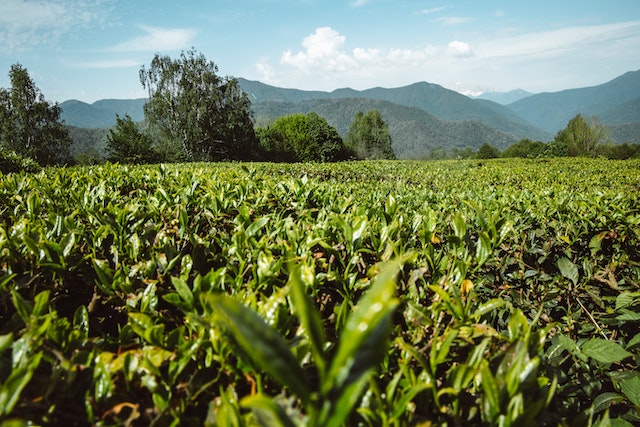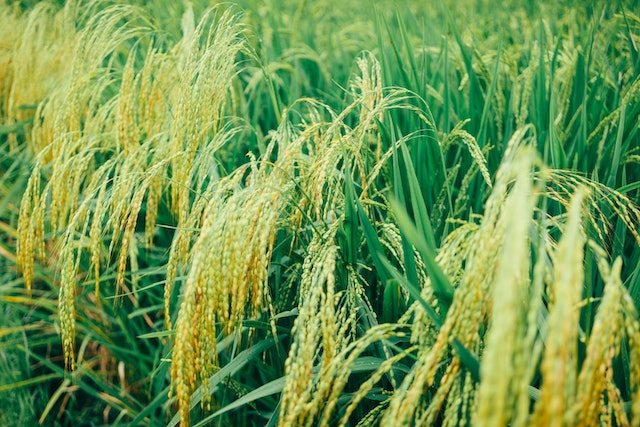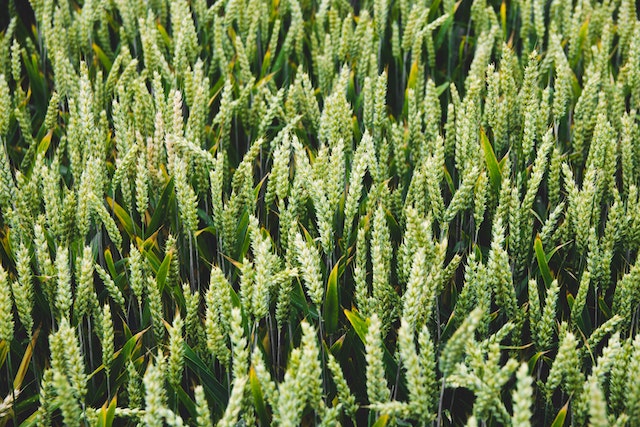In India, rabi ki fasal is planted in winter and harvested in the spring. The Arabic translation of the word “Rabi”, is “spring” which is used in the Indian subcontinent and where it is the spring harvest, otherwise, it is called a “winter crop”.
Cultivation of rabi ki fasal is mainly through irrigation since monsoons are already over in November. In fact, rains at the wrong time in November or December can destroy the crop. Farmers plant the crops at the beginning of autumn so that farmer can harvest the crop in spring. However, wheat, barley, mustard, and green peas are some of the important rabi crops that grow in India.
Since India is an agricultural country, a lot of farming is done here. That’s why it is essential for all of you to know what is rabi ki fasal, when it is harvested when the crop is sown, and what are rabi ki fasal. Let us know in detail about the Rabi crop in this article.
What Is Rabi Ki Fasal?
Rabi ki fasal is called the “winter crop”. It is generally sown in the months of October to November. Rabi crops require low temperatures when sowing and a dry and warm environment at the time of ripening. The crops require frequent irrigation as they are brown in dry areas. Wheat, potato, barley, gram, linseed, lentils, peas, and mustard are considered the main rabi ki fasal.

Rabi Season:
Rabi ki fasals are sown around mid-November when the monsoon rains are over and the harvesting starts in April to May. The rabi fasal is grown either with rainwater that has percolated into the ground or using the irrigation method. Therefore, heavy rainfall in winter may spoil the rabi fasal.
Followed by barley, mustard, and peas, the major rabi ki fasal in India is wheat. Peas are harvested as early as they are sown. The Indian markets are flooded with green peas from January to March, peaking in February.
Common Rabi Crops:
When you consider which fruits and vegetables are grown in the Rabi season, the prominently grown rabi fasal is wheat. Since, there are various kinds of cereals, fruits, seed plants, and vegetables grown in this season which are listed in a table–
| Cereals | Barley, gram, rapeseed, mustard, oat, wheat, linseed |
| Fruits | Banana, ber, date, grape, grapefruit, guava, lemon, lime, mangoes, orange, mulberries |
| Legumes | Chickpea, kulthi, lobias, toria, urad bean, masoor, mung bean |
| Seed Plants | Coriander, cumin, fenugreek, linseed, mustard, isabgol, sunflower, red gram |
| Vegetables | Bran, beetroot, brinjal, capsicum, garlic, lady finger, radish, spinach, sweet potato, tomato, carrot, broccoli, cabbage. |
Field Preparation:
Since your land is exposed to the sun for two months, you should crush the clods with a Norwegian harrow or a clod crusher. Add acceptable farm yard manure into the soil. Then level the land with the help of a Planker to prepare the seedbed. Divide the field into small plots of suitable size for controlled irrigation.
Sowing Time & Method:
The rabi ki fasal is sown around mid-November, preferably after the monsoon rains are over and harvesting starts in April or May. The crops are full-fledged moreover with rainwater that has permeated into the base or with irrigation. Therefore, good rain in winter may spoil the rabi fasal.
The best sowing time for unirrigated rabi ki fasal is the second fortnight of September if there is acceptable wetness in the soil for good development and growth.
Sowing Method:
- Drilling
- Dibbling
- Plough Furrow
1. Drilling
- Drilling is the most shared technique of rabi crop sowing followed in M.S.
- The seed is drilled with the help of tiffany.
- The seed is covered with soil by harrowing.
- The crop amount is about 10 to 12 kg per hectare.
- The spacing is kept at 45 cm x 15 cm.
- Diminishing is done 15 days after sowing to control plant-to-plant distance.
2. Dibbling:(Pune Method)
- The land is leveled and marked with a maker in both directions.
- The spacing is kept at 45cm x 45cm.
- Made a circle of 20cm diameter at each hill.
- The dry surface of the soil is pulled by hand.
- 6 to 8 seeds are distributed in each circle and protected by saturated soil.
- The first thinning is done 15 days after sowing and only 4 to 5 seedlings are kept in each circle.
- Second, thinning is done 21 days after sowing and only 2 to 3 healthy seedlings are kept in her circle.
- The seed rate is about 5kg/ha.
- This provides the best space to every plant and eventually results in a higher yield.
3. Plough Furrow:
- This method is usually tracked for Rabi dispersion.
- It is followed when the upper soil surface is dry and the lower layer of soil is moist.
- It is tracked to bring good propagation and proper use of soil humidity for plant growth.
- A Nari is tied behind the Deshi wooden plow and the seed is sown.
- The seed rate is 10 to 12 kg/ha.

Disease & Pest Control:
Experts in the agriculture department have conducted farmers to cover winter grass crops such as Berseem, Lucerne, and Oat from insect problems. So that the crop can be kept from collapsing and the farmer’s monetary defeat can be also underestimated.
The spokesperson said that the shoot fly is one of the most destructive insect pests of winter crops. It diligently harms the arising shoots of the crops. American worms and armyworms feed on the leaves of fodder crops and therefore facilitate the production per acre.
Therefore, white flies stink the fly fluid, which conducts to the yellowing of the crop. It eventually involves the ripening of the crop that larvae and both the grown-up step of thrips also suck plant sap. For the control of insect pests, weeds must be maintained.
Weed management should be done very efficiently, as weeds act as a host for harmful insect pests. Biological control should be enabled and biological agents should be used to control damaging insects. The appropriate chemical should be used in the concerned areas.
Harvest Time:
The harvest time of rabi ki fasal is mainly the spring season while the crops are planted in winter. The rabi crops are planted around mid-November, rather after the monsoon rains are over. And farmers begin harvesting the plants in April / May. The crops are grown either with rainwater that has infiltrated into the base or with irrigation.

Examples Of Rabi Ki Fasal:
Here we have mentioned some of the important crops cultivated in the Rabi season–
Wheat:
This major rabi crop is grown during the rabi season. Wheat is planted from November to December and harvested around April. Therefore, China has the largest area dedicated to wheat production. Wheat cultivation requires a clay loam or loam texture soil with good structure and temperate water holding capacity.
Potatoes:
Therefore, potato is a crop of moderate temperature which is cultivated under sub-tropical conditions during the rabi season under. Potato cultivation gives more production per unit area than other crops such as wheat, and paddy. It also gives more earnings per hectare.
Barley:
Barley is one of the most cultivated cereals in the world and has been used in religious ceremonies since antique tomes. It is mainly grown in India, Russia, Ukraine USA, and Canada. Barley is a more tolerant plant than wheat which can be sown in different kinds of soil.
Tauria:
Tauria is sown in the form of a Catch Crop in the middle of Rabi and Kharif. Therefore, the extra earnings can be gained by producing it. However, the first plowing should be done with a soil turning plow and 2-3 ploughings should be done with a local plow, and cultivator, and make the soil flaky.
Mustard:
Therefore, mustard has a prominent place in rabi oilseed crops. In spite of many efforts in the state, there is no significant increase in the area of mustard. Due to the increase in irrigated capacity, the main reason for this is the increase in the area of other important crops.
Safflower:
Safflower cultivation can be more worthwhile in the case of inflexible irrigation conditions. Mainly, the safflower is cultivated in Bundelkhand. Farmers from eastern lands do less cultivation of safflower than other oilseed crops.
Maize:
It can be successfully cultivated in the other irrigated parts of the state as it is cultivated in the north/eastern plains. The appropriate sowing time for rabi maize is from October to November. If there is a shortage of moisture, then prepare the field by Pulwa. Before sowing, the seed treatment with plant-to-plant distance should be 20 to 25 cm.
Peas:
Sowing peas in loam and light loam soil is more suitable for the crops. Peas are sown from mid-October to mid-November and the sowing process should be done at a distance of 20 cm to 30 cm behind the plow. Peas are sown by Patnagar Zero Till Drill.
Lentils:
Lentils are specially planted in open fields after paddy. The land should be heavier than loam and is more suitable for the cultivation of lentils. The appropriate time for sowing lentils is from mid-October to mid-November. In case of delay, it is appropriate to sow it from December to the first week.

Conclusion:
So, we have defined the entire details of rabi ki fasal. After reading this article, you can learn which is the appropriate season for planting the rabi fasal. Hope you understand which crops are sown under rabi season. However, if you have any inquiries related to this topic, then you can ask by leaving a little message in the comment section.
